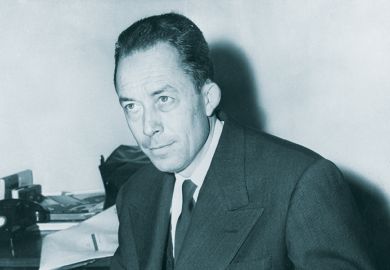There is an awkward fit between the different parts of this book. A Mirror in the Roadway is in essence a collection of lectures, essays and articles commissioned for a range of occasions. Yet in the preface and introduction, Morris Dickstein makes a claim for these diverse pieces on 19th and 20th-century writers as a far more coherent and ambitious enterprise, an argument for the value of realism in fiction.
Literature enlightens us by evoking a world and involving us in it, he says, but this world is always grounded in reality: "I've tried to show... that the imagination can indeed create something new, but always stitched together from pieces of the real world."
A firm traditionalist, Dickstein takes issue with deconstructive theorists, who see literature as a separate, self-referential world of language, and with new historicists, who deny fiction its integrity by grounding it too stubbornly in a social context that may not be relevant to the writer's purposes. To make his case about how realism works in fiction, he elaborates on Stendhal's famous image of the novel as "a mirror being carried along a road" - like a hand-held movie camera, it offers us constantly shifting reflections of the world, but each "shot" is subjective, too, as it must be framed by someone.
But what follows hardly fits into this theoretical framework. That is not intended to devalue the essays, many of which are excellent pieces of scholarship, but it seems a shame that Dickstein - or his publishers - felt the need to dress them up as something other than what they are. A Mirror in the Roadway works best when approached as a book to dip into. The focus is on individual writers - Theodore Dreiser, Upton Sinclair, Willa Cather, F. Scott Fitzgerald, Franz Kafka, George Orwell, Raymond Carver, Saul Bellow and the like - but most of the essays sprawl and set the authors in context.
The best pieces engage in a quirky and personal way with their subjects. The paper on Orwell makes an eloquent case for the celebration of everyday life in Nineteen Eighty-Four , providing a different take on the stark, political dystopia we normally associate with the novel. Dickstein grounds this in biography, pointing out that Orwell's "terminal illness lent a lyrical glow to the fugitive pleasures of ordinary life". He also writes engagingly on Kafka, noting that there is much humour - and realism - in his black allegories.
There are also gems to be found among the more theoretical pieces, such as the paper "Damaged literacy". It tackles the perceived "decay of reading" in modern culture and sets forth sensible counter-strategies for making us read well: "We need a better balance between the naive and suspicious readers in ourselves: between the willing suspension of disbelief and our ability to withhold ourselves and read sceptically."
Dickstein's best-known book, Gates of Eden: American Culture in the 1960s , dealt with the popular culture boom of that decade, including the music of Bob Dylan and the Rolling Stones. His focus here is strictly literary, but there is still a sense of constant engagement with wider culture, as if all creative utterances are somehow vital and interlinked. And that - his old-fashioned belief in the power of art - is a good reason to read Dickstein. But do not expect a unified critical argument.
Madeleine Minson is a freelance critic and translator.
A Mirror in the Roadway: Literature and the Real World
Author - Morris Dickstein
Publisher - Princeton University Press
Pages - 280
Price - £17.50
ISBN - 0 691 11996 1
Register to continue
Why register?
- Registration is free and only takes a moment
- Once registered, you can read 3 articles a month
- Sign up for our newsletter
Subscribe
Or subscribe for unlimited access to:
- Unlimited access to news, views, insights & reviews
- Digital editions
- Digital access to THE’s university and college rankings analysis
Already registered or a current subscriber? Login



